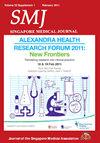新加坡公立医疗机构多药滥用流行率横断面研究
IF 1.7
4区 医学
Q2 MEDICINE, GENERAL & INTERNAL
引用次数: 0
摘要
多重用药与潜在不当用药(PIMs)发生率增加有关,导致不良药物事件和用药错误的风险增加。本研究是新加坡第一项多中心横断面研究,旨在确定多重用药的流行率、相关因素和涉及的常见药物类别,并评估老年人用药处方的适当性。 研究人员对从五家急症医院和初级保健综合诊所随机抽取的两天的处方进行了回顾性审查。收集了患者的人口统计学特征、处方项目数和处方药物的详细信息。通过使用 Beers 标准识别 PIMs 来评估处方的适当性。采用逻辑回归法评估人口统计学特征和护理环境类型与多药方和 PIM 使用的关系。 医院的多药使用率明显高于综合诊所(66.6% 对 35.0%,P < 0.001)。相反,在使用多种药物的老年人中,综合诊所的 PIMs 患病率明显高于医院(34.6% 对 27.1%,P = 0.010)。年龄≥65岁的患者和住院患者使用多种药物的几率分别高于21-64岁的患者和综合诊所患者。在两种医疗机构中,慢性病用药通常都会导致多重用药。在医院和综合诊所中,治疗功能性胃肠道疾病的药物和全身性抗组胺药分别是最常见的多药。 随着新加坡人口的老龄化和慢性病负担的加重,预计多种药物的使用率会有所上升。因此,应更加重视减少不适当的多药治疗。本文章由计算机程序翻译,如有差异,请以英文原文为准。
Prevalence of polypharmacy: a cross-sectional study in Singapore public healthcare institutions
Polypharmacy is associated with increased prevalence of potentially inappropriate medications (PIMs), leading to higher risk of adverse drug events and medication errors. This study was the first multicentre cross-sectional study in Singapore that determined the prevalence of polypharmacy, its associated factors and the common drug classes involved, and evaluated prescribing appropriateness of drugs used by older adults. The prescriptions on two randomly selected days from five acute care hospitals and primary care polyclinics were retrospectively reviewed. Patients’ demographic characteristics, number of prescription line items and details of prescribed drugs were collected. Prescribing appropriateness was evaluated by identifying PIMs using the Beers Criteria. Logistic regression was used to assess the association of demographic characteristics and type of care setting with polypharmacy and PIM use. Prevalence of polypharmacy was significantly higher in hospitals than in polyclinics (66.6% vs. 35.0%, P < 0.001). On the contrary, prevalence of PIMs in older adults with polypharmacy was significantly higher in polyclinics than in hospitals (34.6% vs. 27.1%, P = 0.010). Patients aged ≥65 years and hospitalised patients had higher odds of having polypharmacy than patients aged 21–64 years and polyclinic patients, respectively. Drugs used for chronic conditions commonly contributed to polypharmacy in both care settings. The top PIMs in hospitals and polyclinics were drugs for functional gastrointestinal disorders and systemic antihistamines, respectively. With the ageing population and growing burden of chronic disease in Singapore, increase in prevalence of polypharmacy is expected. More focus should thus be placed on reducing inappropriate polypharmacy.
求助全文
通过发布文献求助,成功后即可免费获取论文全文。
去求助
来源期刊

Singapore medical journal
MEDICINE, GENERAL & INTERNAL-
CiteScore
3.40
自引率
3.70%
发文量
149
审稿时长
3-6 weeks
期刊介绍:
The Singapore Medical Journal (SMJ) is the monthly publication of Singapore Medical Association (SMA). The Journal aims to advance medical practice and clinical research by publishing high-quality articles that add to the clinical knowledge of physicians in Singapore and worldwide.
SMJ is a general medical journal that focuses on all aspects of human health. The Journal publishes commissioned reviews, commentaries and editorials, original research, a small number of outstanding case reports, continuing medical education articles (ECG Series, Clinics in Diagnostic Imaging, Pictorial Essays, Practice Integration & Life-long Learning [PILL] Series), and short communications in the form of letters to the editor.
 求助内容:
求助内容: 应助结果提醒方式:
应助结果提醒方式:


